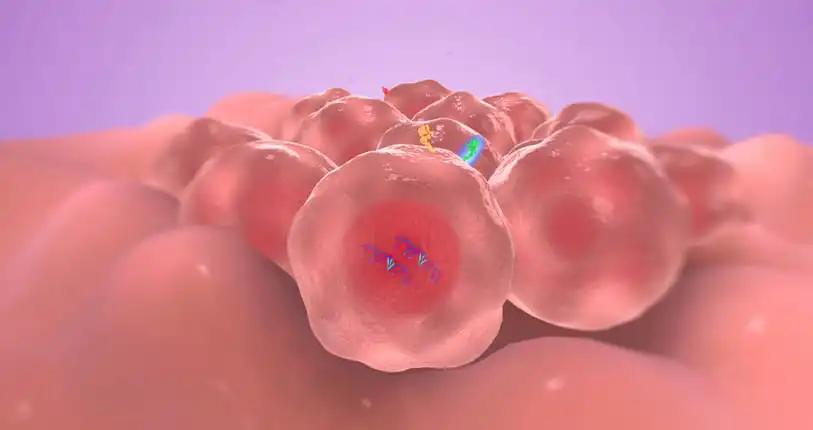KEY TAKEAWAYS
- The MONALEESA-3 Phase III clinical trial evaluated RIB in combination with FUL versus PBO plus FUL in postmenopausal patients with HR+
- The trial evaluated the OS advantage using RIB and FUL compared to PBO and FUL as a 1L or 2L treatment.
- The trial demonstrated a significant overall survival benefit observed with first-line ribociclib compared to placebo.
- The outcomes observed in the ITT and 2L populations largely agreed with the prior analysis.
- The noteworthy outcomes observed in the first-line (1L) scenario provide additional backing for implementing RIB plus ET in HR+, human epidermal growth factor HER2− ABC.
The final protocol-specified overall survival (OS) analysis and an exploratory OS analysis with extended follow-up of the MONALEESA-3 clinical trial (NCT02422615) have revealed a noteworthy OS advantage with the use of RIB and FUL compared to placebo (PBO) and FUL as a first-line (1L) or second-line (2L) treatment. Upon conducting the analysis, it was observed that the median overall survival (OS) in the intent-to-treat (ITT) population was 53.7 months for RIB and 41.5 months for PBO. The median overall survival (mOS) was not attained in the RIB arm for first-line patients. However, in second-line patients, the mOS were 39.7 months for RIB compared to 33.7 months for placebo (PBO).
The researchers presented an investigative evaluation of overall survival (OS) with comprehensive monitoring, enabling additional delineation of enduring OS advantages of RIB in the first-line (1L) context. Postmenopausal patients diagnosed with hormone receptor-positive and HER2-negative advanced breast cancer were subjected to a randomized clinical trial with a ratio of 2:1. The patients were administered Ribociclib in combination with Fulvestrant or Placebo in combination with Fulvestrant. The evaluation of the upgraded operating system in the 1L environment, which refers to patients with newly diagnosed disease or relapse more than 12 months after the completion of [neo]adjuvant endocrine therapy, was conducted using the Cox proportional hazards model and Kaplan-Meier methods. The evaluation encompassed progression-free survival 2 (PFS2) and chemotherapy-free survival (CFS).
As of the data cutoff on January 12, 2022, the median follow-up for first-line patients was 70.8 months. In the ribociclib (RIB) and placebo (PBO) arms, 16.5% and 8.6% of patients were still receiving treatment. The study findings indicate a significant overall survival benefit observed with first-line ribociclib compared to placebo (median overall survival, 67.6 versus 51.8 months; hazard ratio, 0.67; 95% confidence interval, 0.50-0.90). The overall survival rate at a 5-year follow-up was 56.5% for patients receiving the investigational drug RIB, compared to 42.1% for those receiving a placebo (PBO).
The results indicate that RIB demonstrated a favorable outcome compared to PBO regarding PFS2 (with a hazard ratio of 0.64) and CFS (with a hazard ratio of 0.62). Among the patients who discontinued the study treatment, subsequent antineoplastic therapy was administered to 81.8% and 89.7% of individuals. In the RIB arm, 16.7% of patients received a subsequent cyclin-dependent kinase 4/6 inhibitor, while 35.0% of patients received the same treatment in the PBO arm. The outcomes observed in the intention-to-treat (ITT) and second-line (2L) populations were largely in agreement with the prior analysis. The present study conducted an exploratory analysis of 1L RIB + FUL in MONALEESA-3 and has reported the most extended median overall survival (67.6 months). This represents a 15.8-month improvement compared to the placebo group and a relative risk reduction of 33% in a 1L population in phase 3 clinical trial in advanced breast cancer. The noteworthy outcomes observed in the first-line (1L) scenario provide additional backing for the implementation of ribociclib (RIB) plus endocrine therapy (ET) in hormone receptor-positive (HR+), human epidermal growth factor receptor 2-negative (HER2−) advanced breast cancer (ABC).
Source:https://cslide.ctimeetingtech.com/breast22hybrid/attendee/confcal/show/session/2
Clinical Trail: https://clinicaltrials.gov/ct2/show/NCT03742102
Patrick Neven, Peter A. Fasching, Stephen Chia, Guy Jerusalem, Seock-Ah Im, Katarina Petrakova, Giulia V. Bianchi, Miguel Martin Jimenez, Arnd Nusch, Gabe S. Sonke, Luis De la Cruz Merino, J. T. Beck, Juan Pablo Zarate, Yongyu Wang, Arunava Chakravartty, Craig Wang, Dennis Slamon/LBA4 – Updated overall survival (OS) results from the first-line (1L) population in the Phase III MONALEESA-3 trial of postmenopausal patients (pts) with HR+/HER2? Advanced breast cancer (ABC) treated with ribociclib (RIB) + fulvestrant (FUL)/Conference Calendar – ESMO Breast 2022 Onsite and Online Congress. (n.d.). Cslide.ctimeetingtech.com. Retrieved April 17, 2023, from https://cslide.ctimeetingtech.com/breast22hybrid/attendee/confcal/show/session/2



